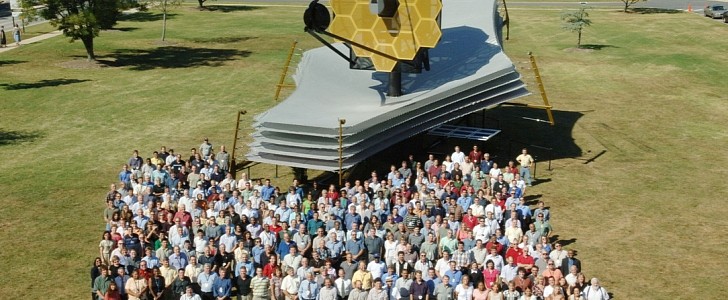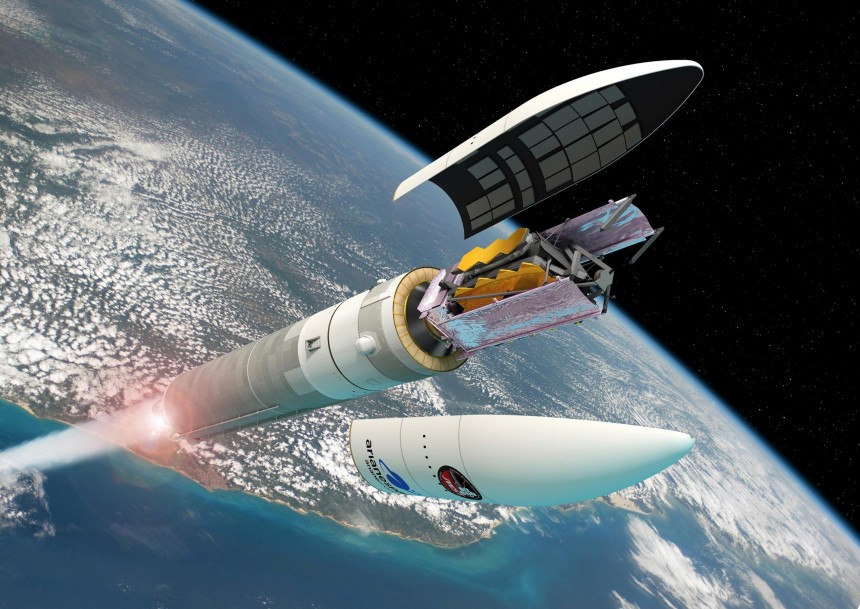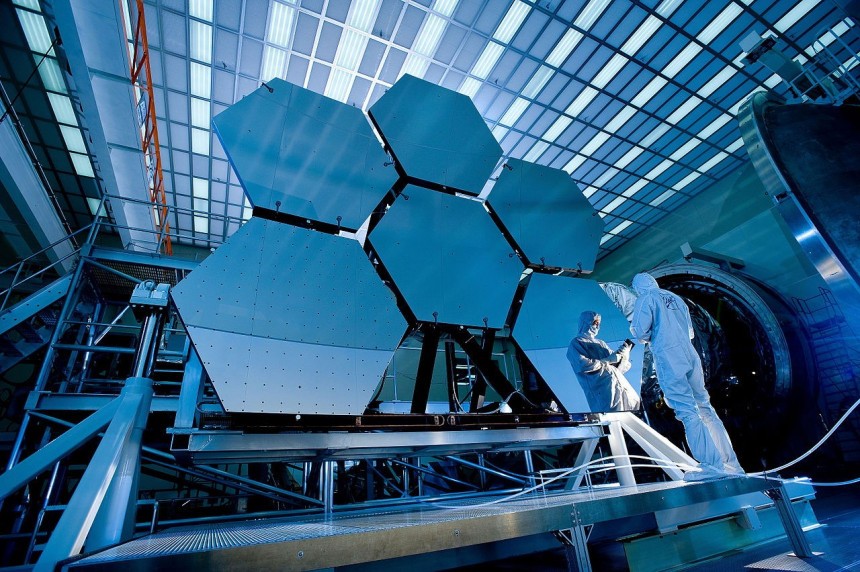It's a Christmas miracle! After 25 years of development hell, the James Webb Space Telescope launched into orbit on Christmas morning. Much to the chagrin of people on Reddit and Twitter who bet money on it failing.
But JWST is so much more than the world's most powerful space telescope mankind has ever constructed. It's also one hell of a rollercoaster of a story from its inception to its launch almost 30 years later. Come and join us, kick back, relax, and take a trip back in time with us to the very Genesis of the JWST program.
You can't begin any honest dialogue about the James Webb Space Telescope without first introducing its predecessor, the venerable Hubble Space Telescope. Although in truth, the two spacecraft have little in terms of functionality in common. In its prime, Hubble brought clarity to corners of the cosmos scientists even a few decades prior could have never imagined in their wildest dreams. The iconic ultra-violet and visible light telescope showed us mind-boggling creations in the vastness of space and helped us understand phenomena that were once alien to science.
Hubble deployed one day after its launch date on the 25th of April, 1990. It wasn't long after the lens caps on Hubble's instrumentation were opened that plans for a successor spacecraft had begun. Plans were initially as open-ended as building a telescope more versatile and capable of higher imagery in more spectrums than Hubble. Over time, this vision morphed into an initiative called Project Hi-Z.
No sooner did the first sketches of this new project enter the drawing board did the operation of the Hubble Telescope begin to falter. Images from the telescope came back blurry and unfocused in its initial stages of operation. It was soon clear that having Hubble shoulder the burden of deep space exploration would be a foolish idea. While Space Shuttle missions prepared to fix Hubble, Project Hi-Z continued to take shape.
Hubble wowed scientists and the public with its breathtaking images of things like the Pillars of Creation, a cloud of cosmic gasses millions of miles tall that will one day soon condense into the next generations of stars. Such images come from so far away that the light that emanates from them is many thousands, if not millions of years old.
But scientists wanted to delve even farter, ostensibly to the very creation of the stars and galaxies of our universe. For images of that quality, the telescope would have to be far off in High Earth Orbit. Far away from interference from forces closer to home where Hubble currently orbits. It would also need to have an optical array that dwarfed that of Hubble and be light enough to safely launch to such a peculiar orbit.
Shuttle missions soon fixed Hubble. Meanwhile, the project that would become the James Webb Space Telescope was formally submitted to NASA for evaluation in 1996. Further deliberations gave the project its formal name in honor of the former NASA Administrator James E. Webb. The contract was finalized in 2003. Further assistance came in the form of the European and Canadian space administrations.
Work primarily took place at the Goddard Space Flight Center in Maryland in the project's early days. Cost overruns and concerns about spending allocation forced a redesign of the JWST in 2005, pushing back the launch from 2007 until sometime in 2010. This date was pushed back several more times by Northrop Grumman. The primary aerospace contractor tasked with manufacturing the non-optical side of the spacecraft all the way into the next decade.
$10 billion of government money had been poured into the JWST from its inception until its launch on Christmas day, 2021. Considering how insane some of the photos the now obsolete Hubble telescope once took, we can't even fathom how great something several times more capable is able to bring us. Oh, and shame on you if you bet on the thing blowing up or failing to orbit, consider yourselves to have egg on your faces now.
You can't begin any honest dialogue about the James Webb Space Telescope without first introducing its predecessor, the venerable Hubble Space Telescope. Although in truth, the two spacecraft have little in terms of functionality in common. In its prime, Hubble brought clarity to corners of the cosmos scientists even a few decades prior could have never imagined in their wildest dreams. The iconic ultra-violet and visible light telescope showed us mind-boggling creations in the vastness of space and helped us understand phenomena that were once alien to science.
Hubble deployed one day after its launch date on the 25th of April, 1990. It wasn't long after the lens caps on Hubble's instrumentation were opened that plans for a successor spacecraft had begun. Plans were initially as open-ended as building a telescope more versatile and capable of higher imagery in more spectrums than Hubble. Over time, this vision morphed into an initiative called Project Hi-Z.
Hubble wowed scientists and the public with its breathtaking images of things like the Pillars of Creation, a cloud of cosmic gasses millions of miles tall that will one day soon condense into the next generations of stars. Such images come from so far away that the light that emanates from them is many thousands, if not millions of years old.
But scientists wanted to delve even farter, ostensibly to the very creation of the stars and galaxies of our universe. For images of that quality, the telescope would have to be far off in High Earth Orbit. Far away from interference from forces closer to home where Hubble currently orbits. It would also need to have an optical array that dwarfed that of Hubble and be light enough to safely launch to such a peculiar orbit.
Shuttle missions soon fixed Hubble. Meanwhile, the project that would become the James Webb Space Telescope was formally submitted to NASA for evaluation in 1996. Further deliberations gave the project its formal name in honor of the former NASA Administrator James E. Webb. The contract was finalized in 2003. Further assistance came in the form of the European and Canadian space administrations.
$10 billion of government money had been poured into the JWST from its inception until its launch on Christmas day, 2021. Considering how insane some of the photos the now obsolete Hubble telescope once took, we can't even fathom how great something several times more capable is able to bring us. Oh, and shame on you if you bet on the thing blowing up or failing to orbit, consider yourselves to have egg on your faces now.







